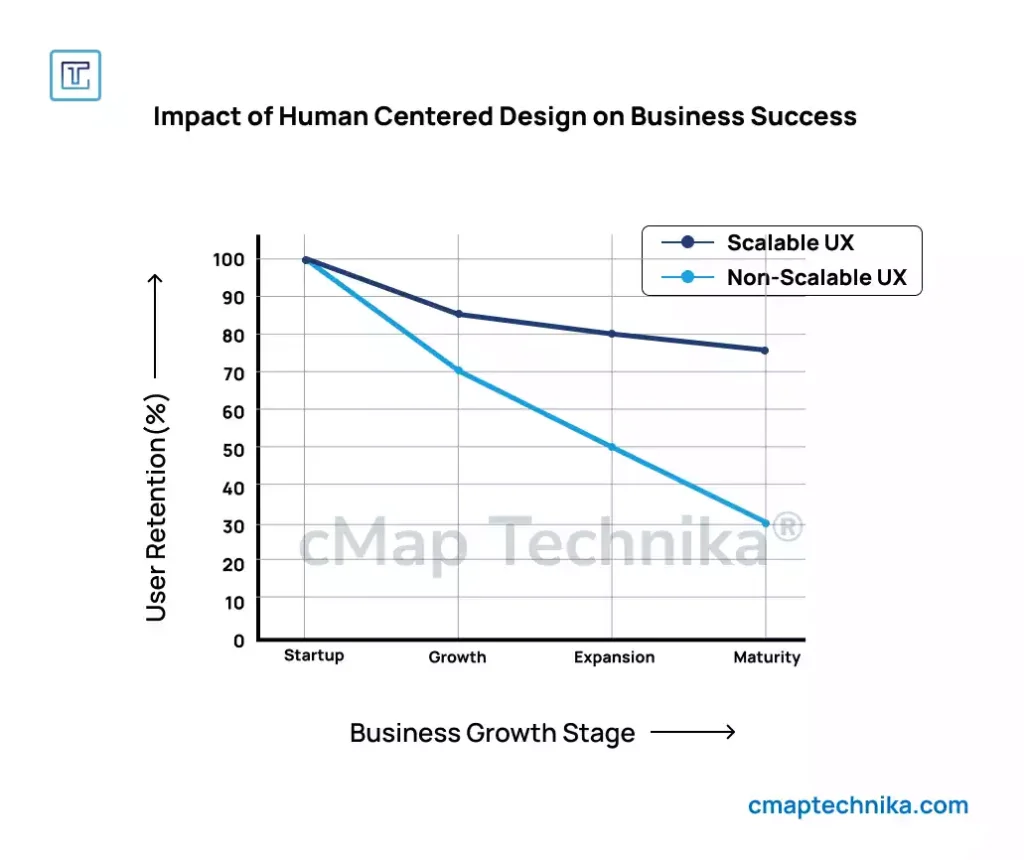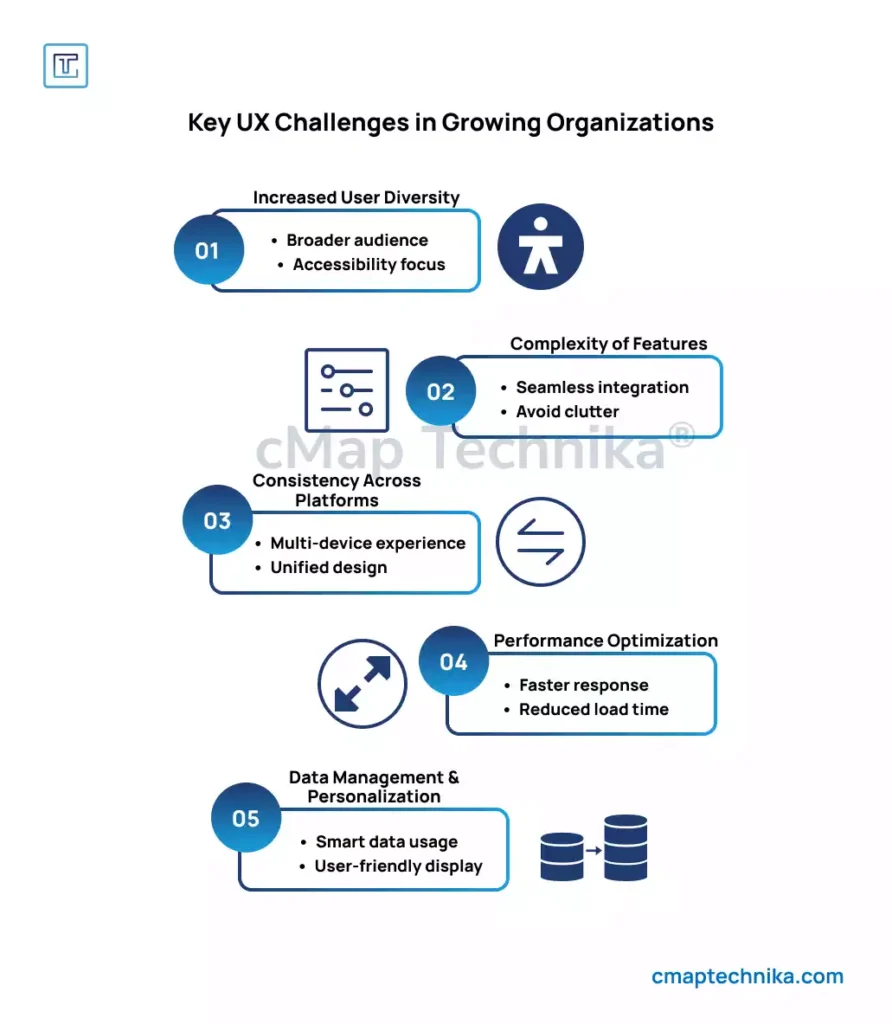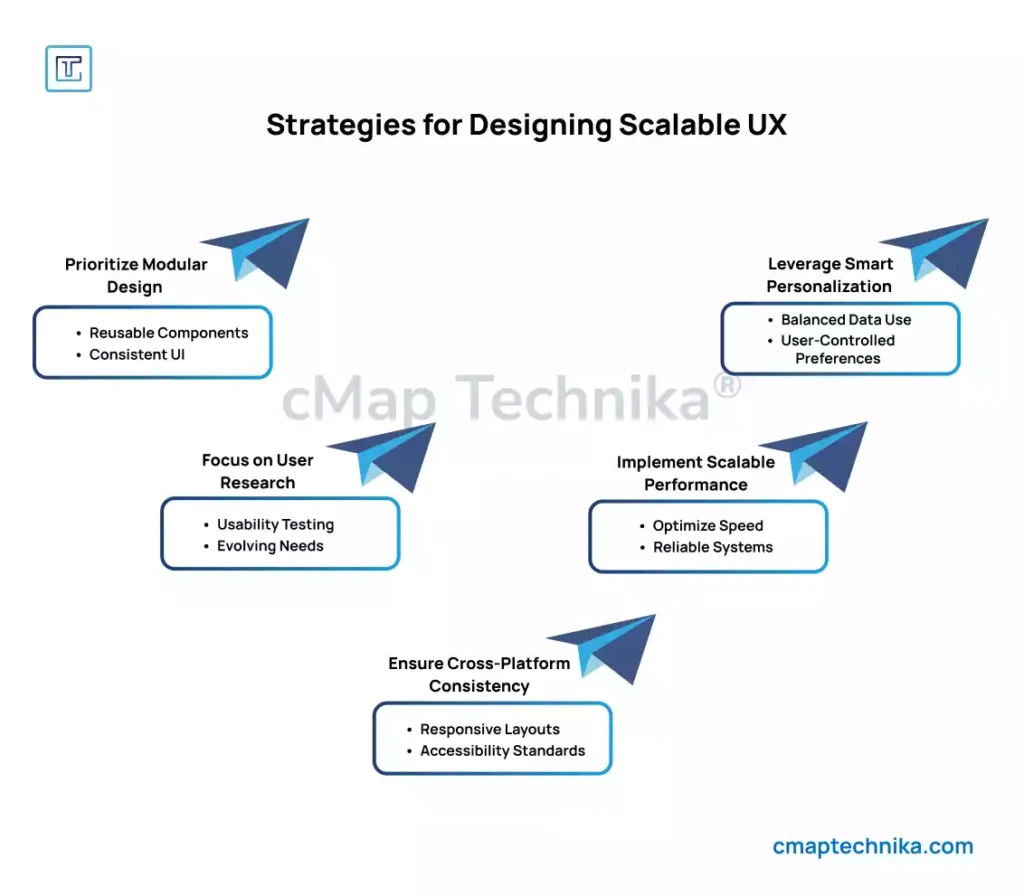As businesses grow, so do their user bases, product offerings, and service complexities. With this growth comes the need for scalable user experiences (UX) that can adapt to an expanding organization while maintaining efficiency, usability, and consistency. Designing for scalability is a critical challenge that requires foresight, flexibility, and a deep understanding of both user needs and business goals.
At Waltcorp, we recognize that as organizations scale, their digital products and services must evolve in tandem. A scalable UX design ensures that as a company grows, its interfaces remain seamless and accessible, accommodating increasing user demands without sacrificing quality or performance.
In this article, we explore the key strategies for designing scalable user experiences that not only meet the current needs of an organization but also prepare it for future growth and expansion.
The Importance of Scalable UX Design

Scalable UX design is about creating experiences that can handle growing complexity without compromising the user experience. For organizations, this means ensuring that as the business expands—whether in terms of user base, products, or geographical reach—the digital touchpoints users engage with continue to function smoothly, intuitively, and effectively.
Poorly designed experiences that aren’t built to scale can lead to frustration, increased churn, and negative customer feedback. On the other hand, a scalable UX helps businesses future-proof their digital platforms, ensuring that they can accommodate growth while keeping users satisfied and engaged.
Key UX Challenges in Growing Organizations

As businesses grow, several UX challenges emerge. Here are some common hurdles that organizations face when designing for scalability:
1. Increased User Diversity
As a business expands, its user base becomes more diverse in terms of demographics, preferences, and behaviors. Designing for scalability means ensuring that the product remains usable and accessible to a broad range of users, from different age groups, regions, and skill levels.
2. Complexity of Features
With growth often comes increased product functionality. New features, services, and integrations need to be added, but they must be seamlessly integrated into the existing user experience. A UX that was originally simple may start to feel cluttered as new functionalities are introduced, potentially overwhelming users.
3. Consistency Across Multiple Platforms
As organizations scale, they may expand across multiple platforms—web, mobile, desktop, and even new devices. Maintaining a consistent, cohesive user experience across all platforms becomes a significant challenge. Scalability means that designs should be flexible enough to work across various devices and screen sizes without losing their integrity.
4. Performance Optimization
As the number of users and interactions increases, so does the demand for faster performance. UX designs need to account for scalability in terms of speed, responsiveness, and load time. A slow or unresponsive interface can drastically reduce user satisfaction, especially as user numbers grow.
5. Data Management and Personalization
As user bases grow, businesses often collect more data, which can be used for personalization and improving user experience. However, managing this data and ensuring it is used effectively without overwhelming the user is a delicate balance. Scalable UX must incorporate ways to display and utilize data without making the interface feel cluttered or invasive.
Strategies for Designing Scalable UX

While the challenges of scaling UX are considerable, there are several strategies businesses can employ to create scalable, adaptable experiences that continue to meet the needs of users as the organization grows.
1. Prioritize Modular Design Systems
A modular design system allows for greater flexibility and scalability as it enables designers to create reusable components that can be easily adapted or expanded as needed. This approach ensures that the design remains consistent and coherent across all platforms, even as new features and functionality are added.
By using design patterns, style guides, and reusable UI elements, businesses can create an efficient workflow that scales without reinventing the wheel each time a new feature or page is needed. This approach also makes it easier to update and maintain the design system, ensuring that consistency is maintained as the product grows.
2. Focus on User-Centered Research
To design a scalable UX, it is critical to understand your diverse user base and how their needs will evolve. Conducting regular user research, including usability testing and feedback sessions, helps uncover insights about user behavior, pain points, and preferences.
By understanding user needs at various stages of the business’s growth, organizations can design experiences that accommodate these shifts and scale with changing expectations. User research should also help identify future trends that could impact the design, allowing businesses to plan ahead and create more adaptable systems.
3. Ensure Cross-Platform Consistency
As your business expands, it’s likely that your users will engage with your product across different devices. To scale effectively, UX design must maintain consistency across multiple platforms. This means designing responsive layouts that adjust seamlessly to different screen sizes, whether a user is interacting with your platform via mobile, tablet, or desktop.
Consistency across platforms is essential to avoid frustrating users as they switch between devices. A scalable UX design ensures that functionality, aesthetics, and usability remain the same, regardless of the device being used. This also includes maintaining accessibility standards to ensure inclusivity across devices and user needs.
4. Implement Scalable Performance Solutions
As user demand increases, so does the need for performance optimization. A key challenge of scalable UX is ensuring that your product or service remains fast, reliable, and responsive, even as the volume of users and interactions grows.
Designing with performance in mind from the outset can prevent bottlenecks down the road. Optimizing load times, minimizing unnecessary elements, and leveraging caching and cloud solutions can all help ensure your product’s performance scales with its user base. Speed is a critical factor in user satisfaction, and a scalable UX must meet these performance demands without compromising functionality.
5. Leverage Personalization Without Overloading the User
As businesses scale, personalization becomes increasingly important. However, the more personalized an experience becomes, the more data it may need to process. A scalable UX must balance personalized content, features, or recommendations without overwhelming the user or cluttering the interface.
Effective use of data visualization and intelligent recommendations can provide users with relevant, personalized experiences without creating a sense of information overload. By offering users the ability to control their preferences, businesses can tailor experiences while keeping them manageable and intuitive.
Conclusion
Designing for scalability is a critical aspect of creating a user experience that evolves with a growing organization. The challenges of scaling UX—ranging from handling increased user diversity to ensuring performance optimization—require careful planning, user-centered design, and an adaptable approach.
By employing strategies like modular design systems, cross-platform consistency, and effective personalization, businesses can ensure that their digital experiences continue to meet the needs of users while supporting organizational growth. A scalable UX design not only enhances user satisfaction but also helps businesses stay competitive and responsive as they expand.
At Waltcorp, we understand that designing for scalability requires a forward-thinking approach that blends user-centric design with strategic business objectives. By addressing scalability from the outset, businesses can create UX solutions that support their growth and deliver lasting value.






